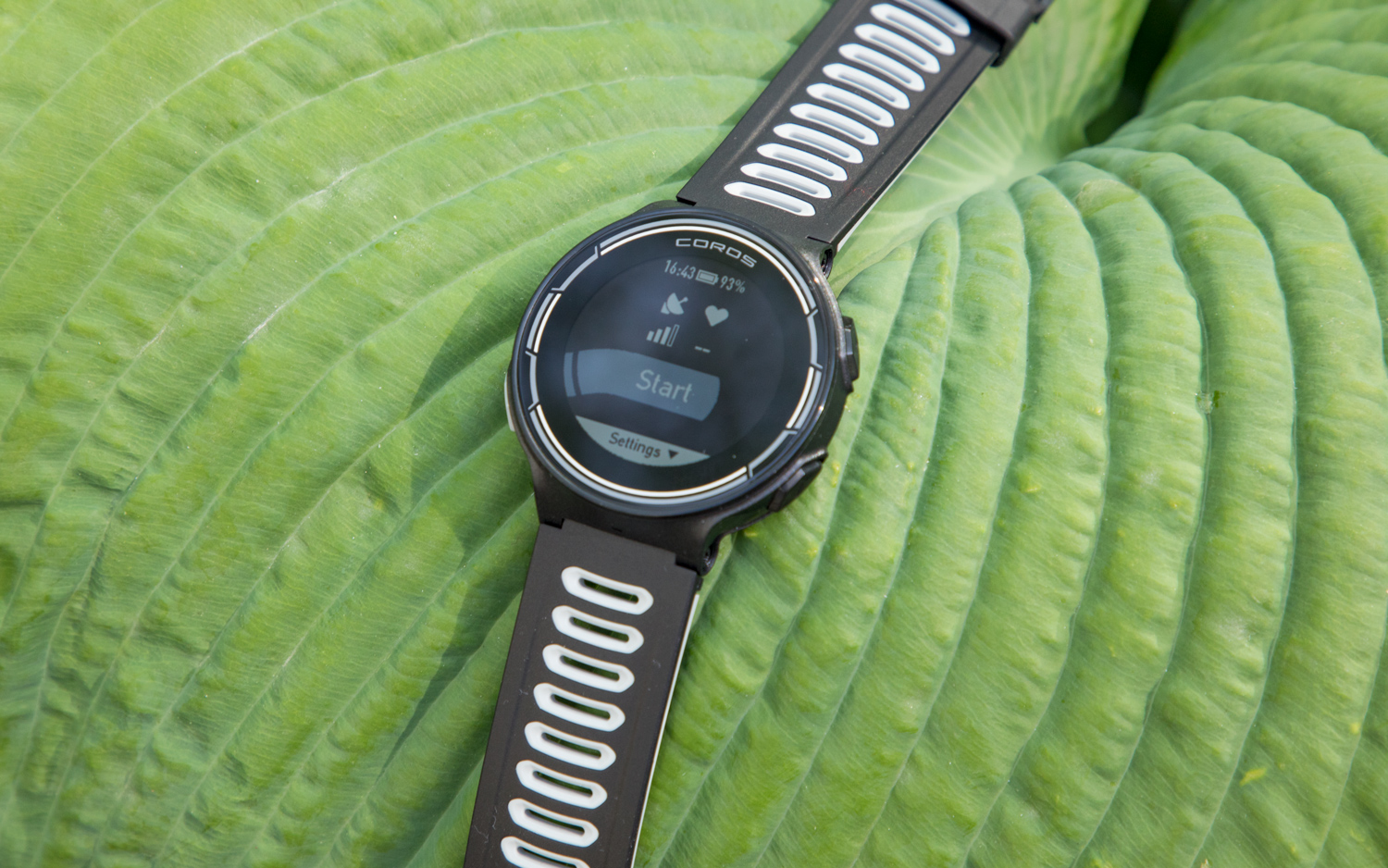Tom's Guide Verdict
Coros' first triathlon watch is good for hyper-focused athletes, but it's a bit bare-bones compared to more-established brands.
Pros
- +
Easy to use
- +
Good battery life
- +
Affordable
Cons
- -
No music controls
- -
Limited workout tracking
Why you can trust Tom's Guide
The Pace M1 ($299) is the first smartwatch from Coros, which is known for its Lynx and Omni smart cycling helmets. As you'd expect from a company focused on cyclist gear, the Coros Pace M1 is meant for serious athletes who have lofty training goals. While the Pace packs a lot of features for tracking triathlon workouts, and though the watch benefits from a lightweight design, it doesn't have much else to offer.
Design
With its circular watch face, silicone band and raised buttons on both sides, the Coros Pace looks a lot like the Garmin Forerunner 735XT ($319). Weighing 1.5 ounces and measuring about 1.75 inches, the Coros Pace is a bit heavier, but just barely.
There are two buttons on either side of the Coros Pace: Up and Down buttons on the right, and Back and Confirm buttons on the left. The Confirm button is the main button used to start a workout or select menu options. It takes a good amount of pressure to push the buttons, which is good, because it means a gentle nudge won't accidentally pause a workout or scroll to another screen.
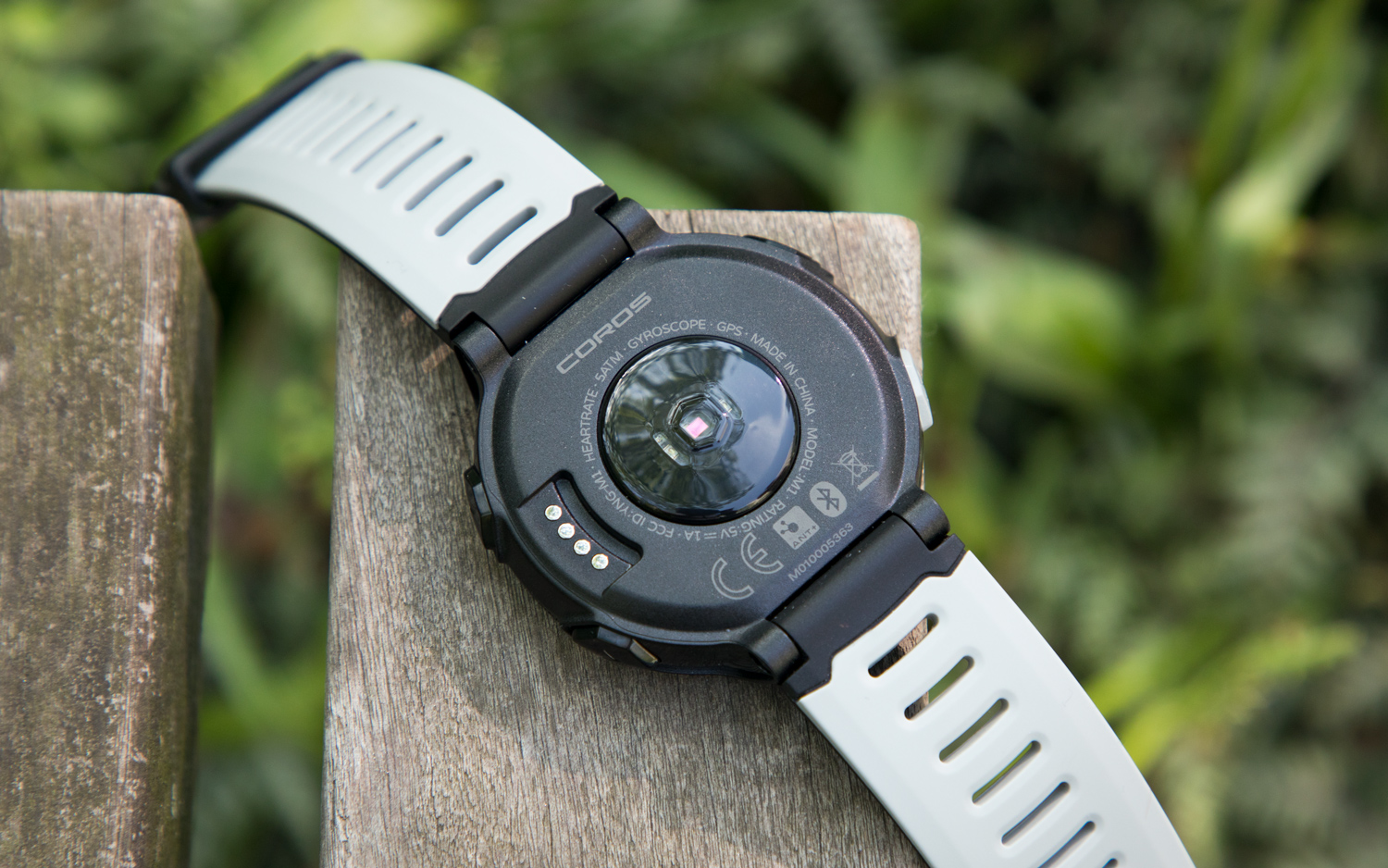
The Coros Pace comes in three color combinations. The watch I reviewed was black with gray accents; other combinations are red with black accents or blue with black accents. In all three color combinations, the Confirm button is the accent color, while the other three buttons are the primary color. This is a nice aesthetic touch, but it also helps you remember, at a quick glance, which is the main button.
MORE: How to Choose the Right Fitness Tracker for Your Needs
There are five sensors inside the Coros Pace: GPS, an optical heart rate monitor (HRM), an accelerometer, a compass, a gyroscope and a barometric altimeter (which the Pace uses instead of GPS to measure altitude). As I discovered, some of these sensors work better than others.
Setup and Notifications
After downloading the Coros app, you scan a QR code displayed on the watch face to pair the watch with the app and your phone. This was a new process for me, but it worked well. It involved fewer steps than processes that have you wait to see a 4- or 6-digit code on the watch and then enter that code in the app.
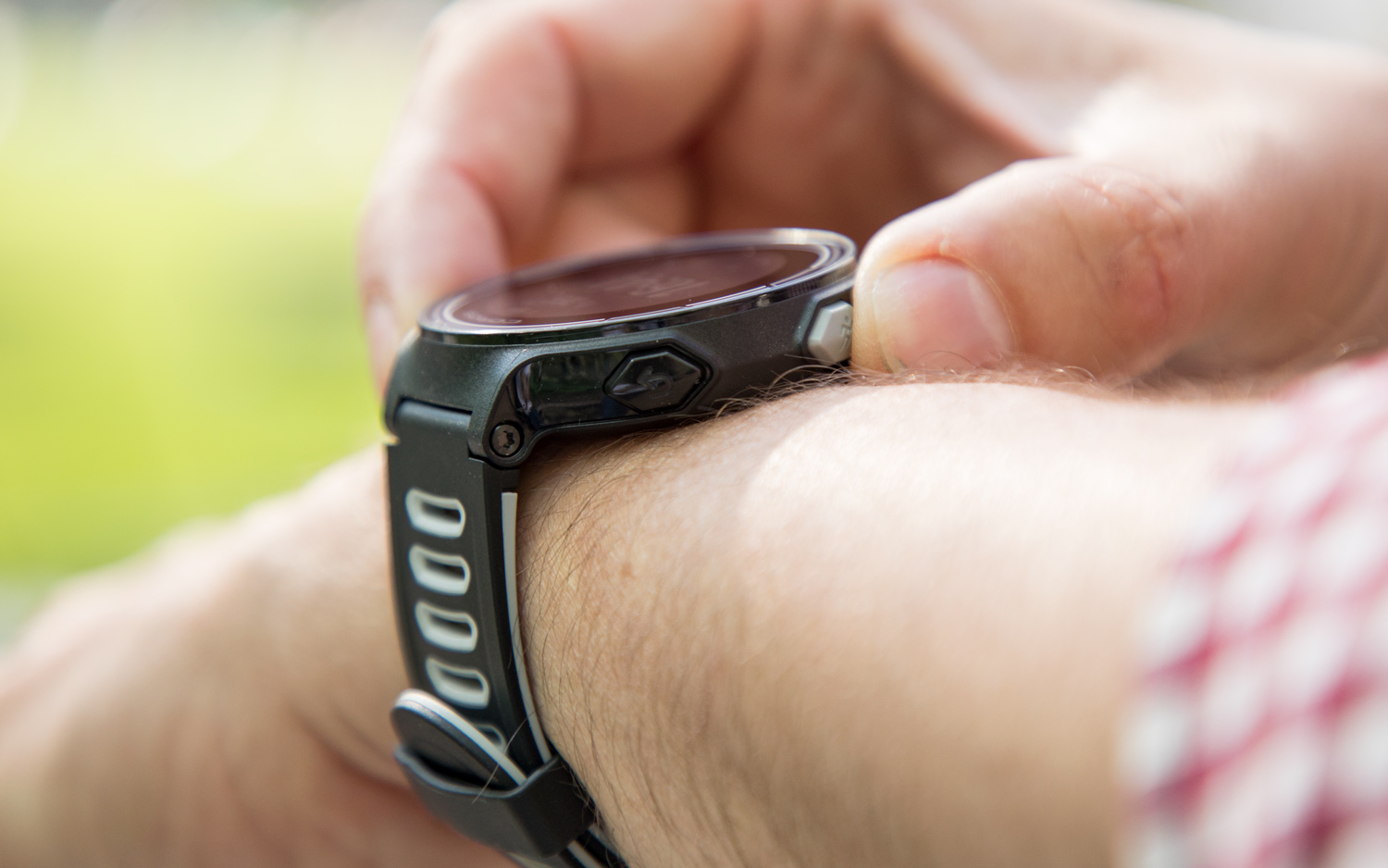
You can set up the Coros Pace to receive the same notifications that you get on your smartphone (Android or iOS). The watch will buzz and vibrate when you get a notification. The Pace shows an email subject line or the first few lines of a Twitter message, but you can't reply to or dismiss notifications. You can answer or decline a phone call, though, which in some cases could be useful. Because my phone is almost always within reach, I turned off notifications after a couple days — the buzzing got annoying quickly.
Interface
In its everyday mode, the Coros Pace shows time, date, steps taken, calories burned, active minutes for the day and remaining battery life. Numbers and letters are displayed in white on a black background, with symbols in one of four secondary colors (red, blue, gray or green). Moving your wrist or pressing the Back button will turn on the backlight.
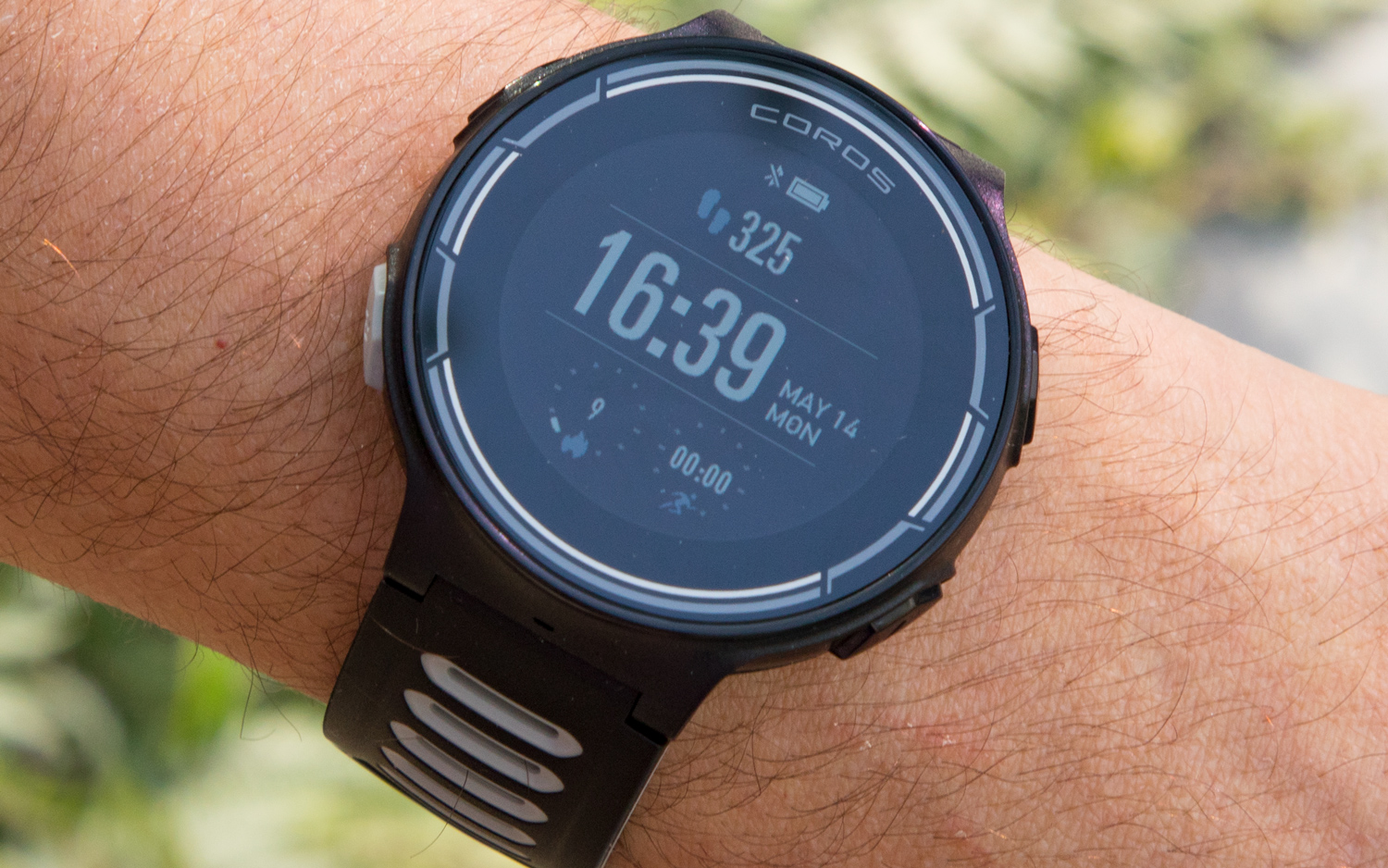
While this is a lot to pack in to a 240 x 240-pixel display, the screen is not cluttered. Each bit of information has its own place on the watch face, and there's enough space in between that the numbers don't sit on top of each other. This is a welcome feature for anyone who's used to scrolling through watch or fitness tracker screens to find this information.
Workout Tracking
The Coros Pace tracks three types of workouts: runs (indoor and outdoor), bike rides (outdoor) and swims (indoor and open water). This is substantially less than on the Forerunner 735XT or Polar M600 ($299), which will track outdoor sports as well as cross-training workouts.
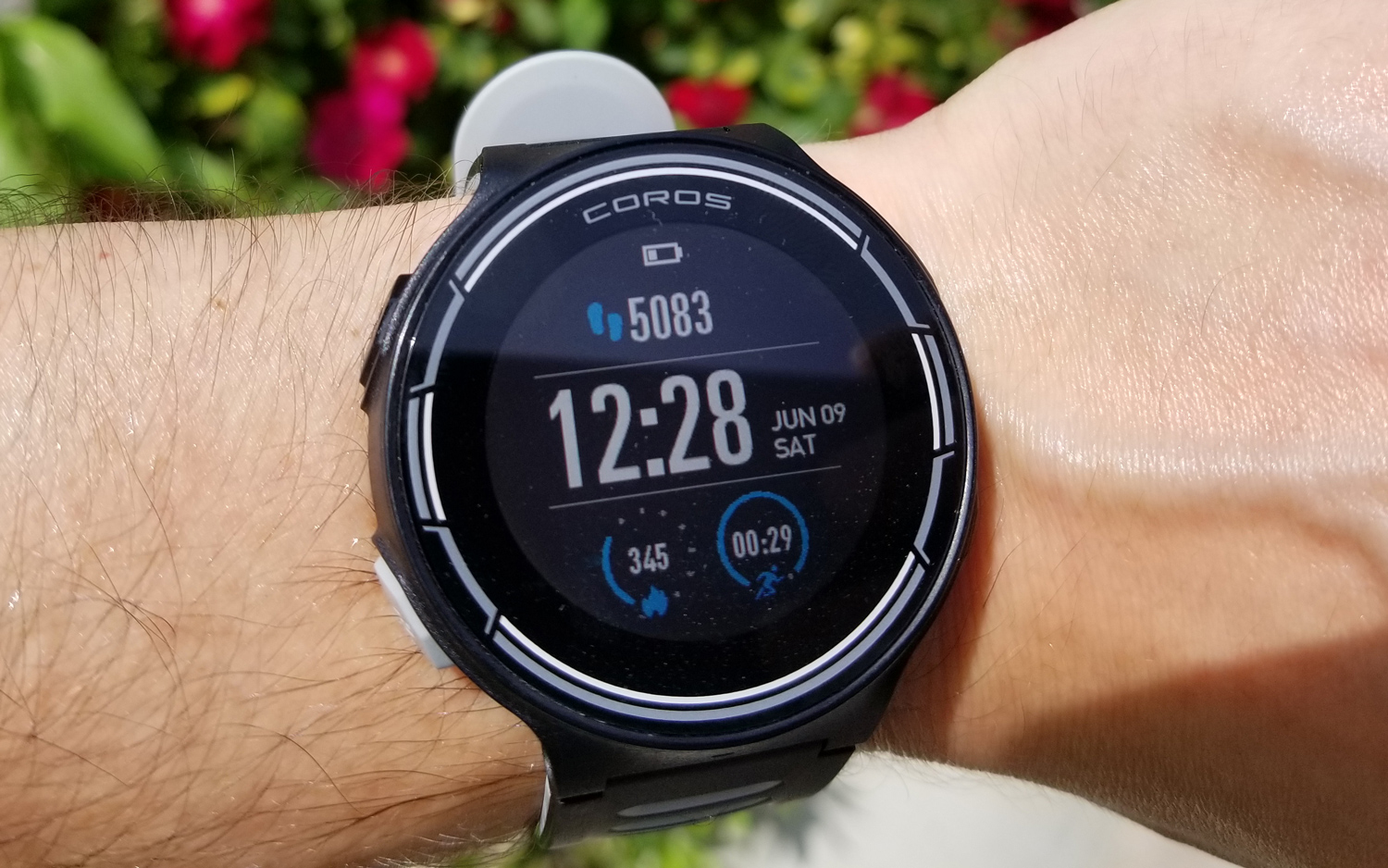
Starting a workout on the Coros Pace is straightforward: Press the Confirm button, scroll to the right activity and hit the Confirm button again. The Coros Pace picked up a GPS signal in a matter of seconds, even on a cloudy day.
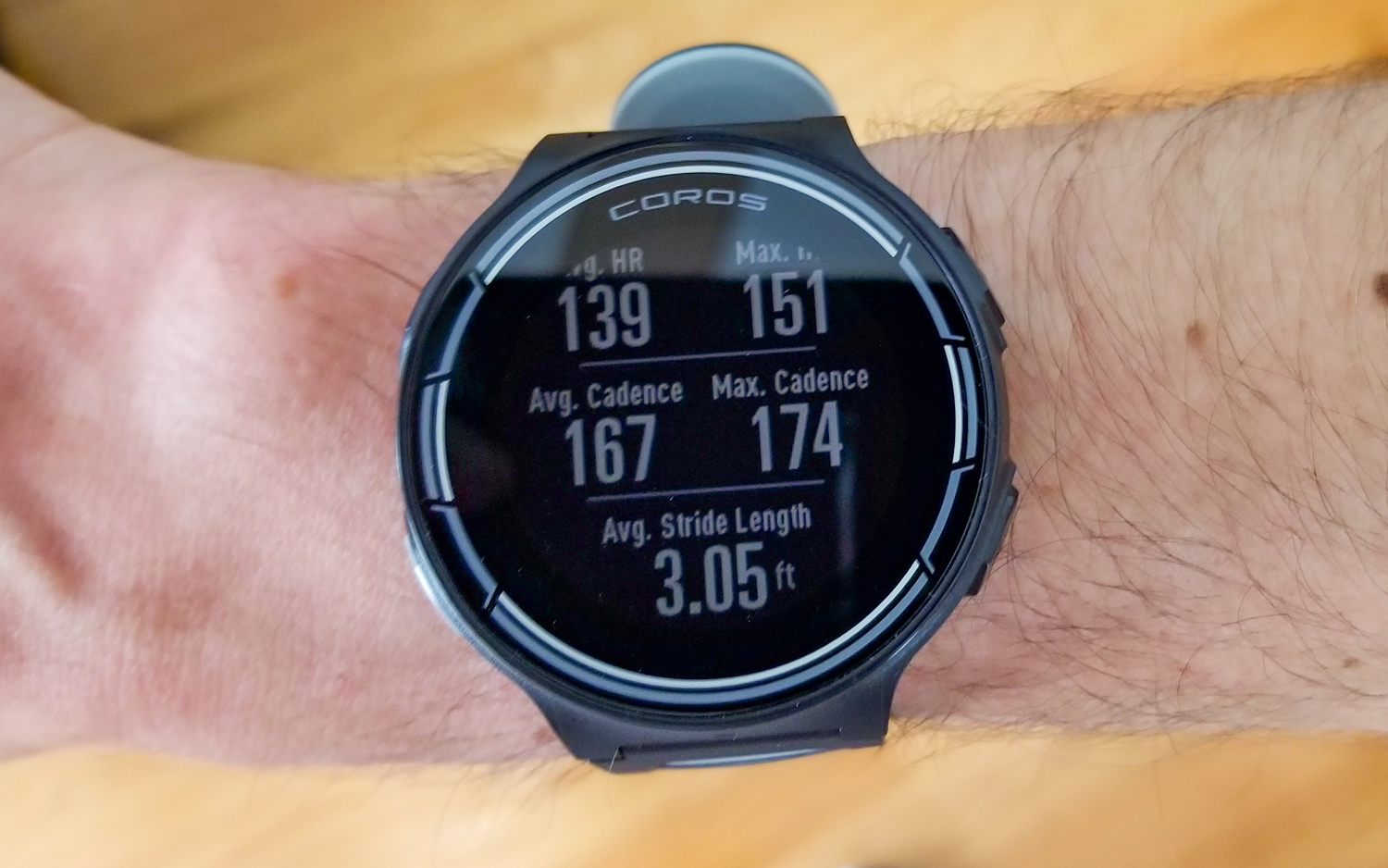
During a run, the Coros Pace will beep and vibrate for each auto lap, displaying the pace and time for the lap. That may seem redundant, but Coros Pace lets you define the distance of your auto lap, which is helpful for interval workouts or other runs when you want to know your pace over a distance that isn't 1 mile. Unfortunately, lap details are displayed for only 2 to 3 seconds (rather than the 5 to 6 seconds of other devices); this makes the information easy to miss if you are focused on your workout.
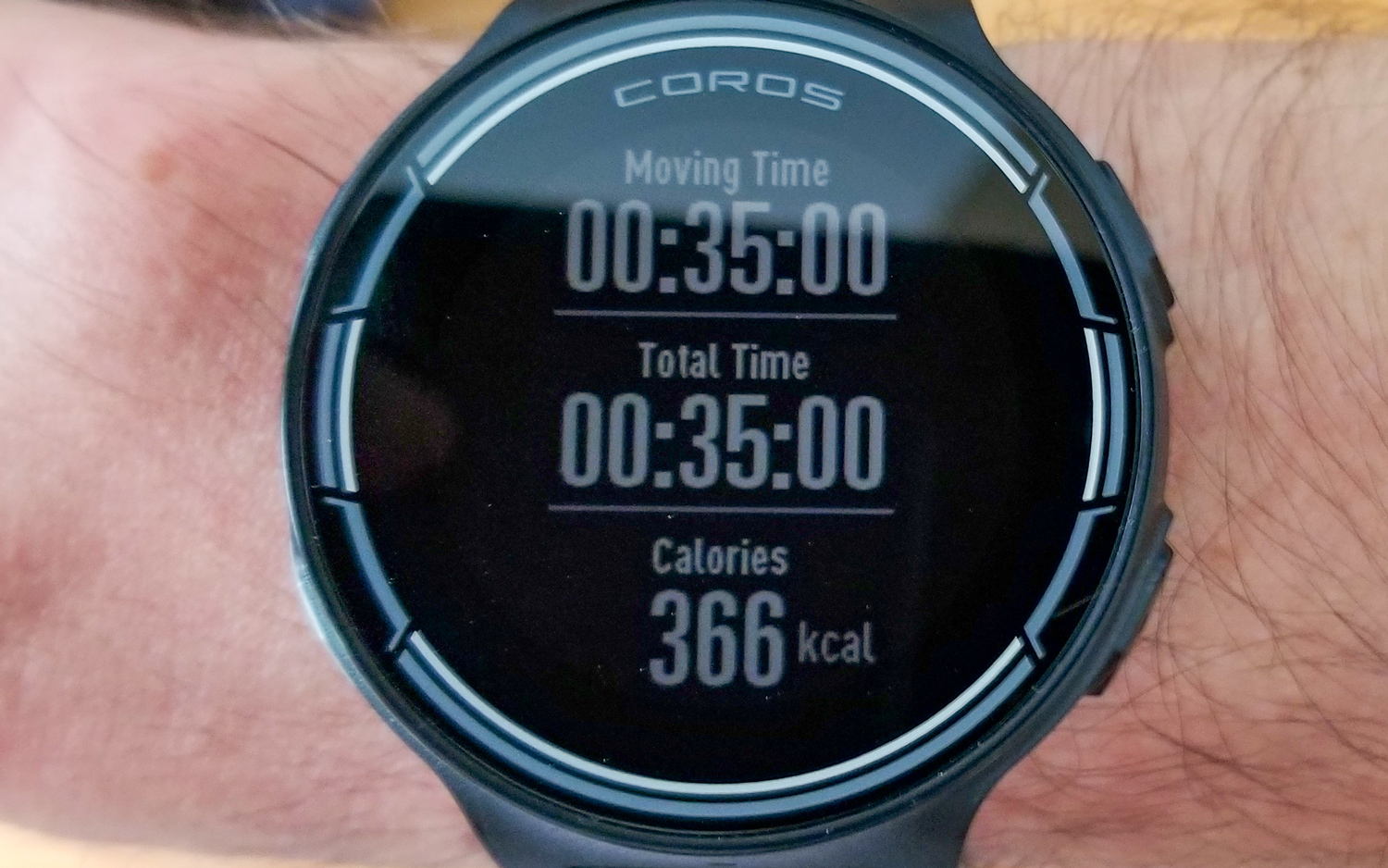
On my first run, an easy 4-miler, the Coros Pace stayed in place on my wrist. On subsequent runs, through, it slid up and down, especially on a hot, sunny day when I sweated quite a bit. I had to tighten the watch strap midrun, which was a bit of a distraction. On a hike in the backwoods of Maine that lasted several hours, the watch more or less stayed in place, though it felt a bit uncomfortable at the end of the hike once the sun finally shone.
MORE: Fitness Trackers - Latest Health and Activity Trackers
One downside to the Coros Pace is that it lacks the music storage found on the Garmin Forerunner 645, Fitbit Ionic and Apple Watch. You can't use the watch to control music playing on your smartphone, either, which you can do with the Forerunner 735XT. While this is not an issue for some use cases — open-water swimming, for example — it may bother someone who listens to music while running.
App
The Coros app provides a daily snapshot of overall activity as well as a list of logged workouts — and that's about it. If you're looking for a visualization of weekly step counts or for lifetime-achievement awards for miles walked or floors climbed, you've come to the wrong place.
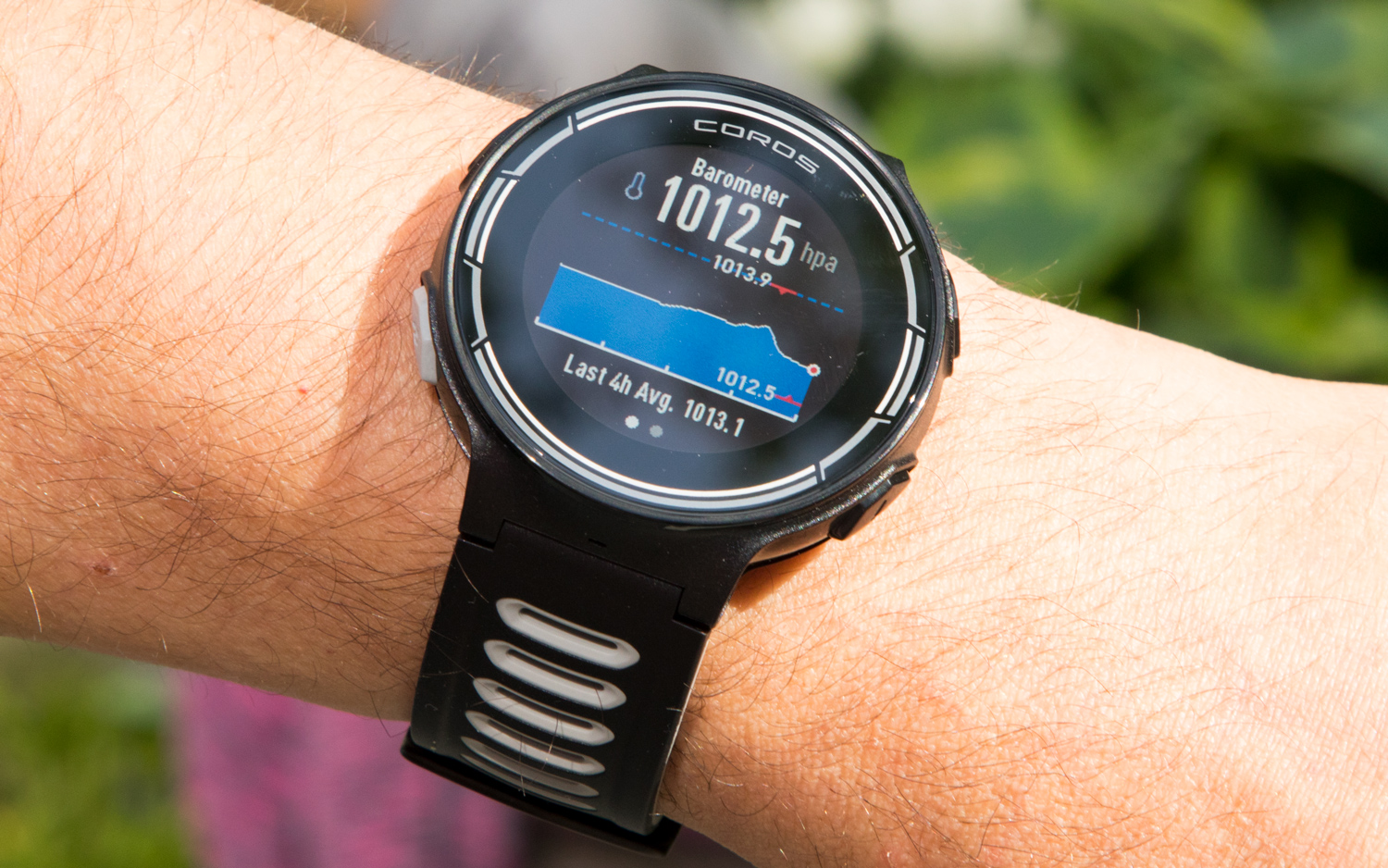
Through the Coros app, you can customize what appears on the watch face as you scroll through various data screens during your workouts. For all workouts (run, bike or swim), the main screen displays distance, pace and elapsed time. The elapsed time appears on the bottom of all screens, no matter what other data is displayed. You can customize the screens if there are specific metrics that matter more for certain workouts — hill grade for one bike ride, lap speed for another and so on. If you get too carried away with customizations, the Default button at the bottom of the screen will return you to the original settings.
The Coros app awards medals for hitting distance goals in training and competition.
For each run, the Coros app provides several data points. Along with distance, pace and lap times, the app will display heart rate and cadence. (The same data points are saved in the watch's history.) As you view this data, it's easy to see the correlation among a faster pace, higher cadence and higher heart rate.
The Coros app syncs with Strava, so users with accounts on that platform can continue to share workouts there. This also means that users aren't limited to the Coros community, which is considerably smaller than Strava's.
MORE: 10 Most Surprising Uses for Fitness Trackers
Finally, the Coros app awards "medals" for hitting distance goals in training and competition. The medals reinforce the notion that the Coros Pace is for athletes in serious training: The shortest distance for a running medal is a 10K; the shortest swim for a medal is a 1K (which may be more than I have swum in my entire life), and the shortest bike ride for a medal is a 50K (which is definitelymore than I have biked in my life).
Accuracy
Here's how the Coros Pace stacks up on three key metrics for athletes in training.
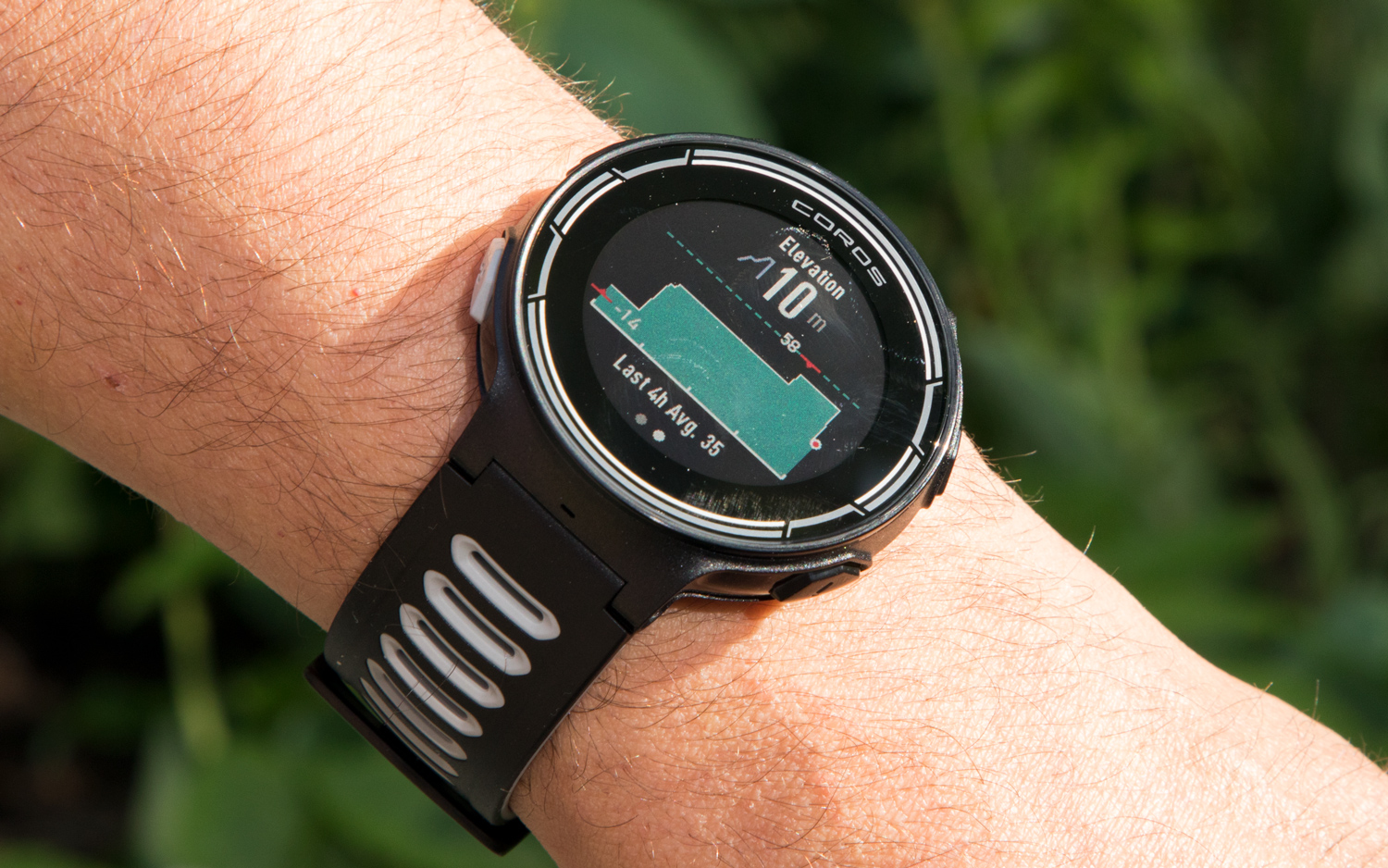
Distance: The Coros Pace connects to GPS, GLONASS and BDS satellites; according to the company, this provides more-accurate location tracking. In my experience, the Pace's distance measurements were a bit off. My first run measured 3.98 miles on the Pace, compared to 4.15 miles as mapped on MilerMeter and 4.07 as tracked by my Garmin Forerunner 35. The three measures were a bit closer on my second run (5.54 miles on the Coros Pace, 5.56 miles on the Forerunner 35 and 5.62 miles on MilerMeter), but my third run was off again (2.02 miles on the Coros Pace and 2.11 miles on MilerMeter).
In my experience, the Pace's distance measurements were a bit off.
Elevation: The Coros Pace effectively measured elevation change, both on short runs in my neighborhood and on a long hike in rural Maine with more than 4,800 feet of elevation change.
Within the app, tapping the "i" icon on the heart rate and cadence graphs will bring up information about the meaning of heart rate zones and increased steps per minute. This is helpful, but other apps (especially Garmin's) provide more-detailed explanations than the Coros app does.
However, the watch occasionally displayed wildly inaccurate elevations. My Boston-area apartment is about 20 feet above sea level, according to U.S. Geological Survey maps, but the Pace once listed my elevation at 69 feet and at 262 feet another time.
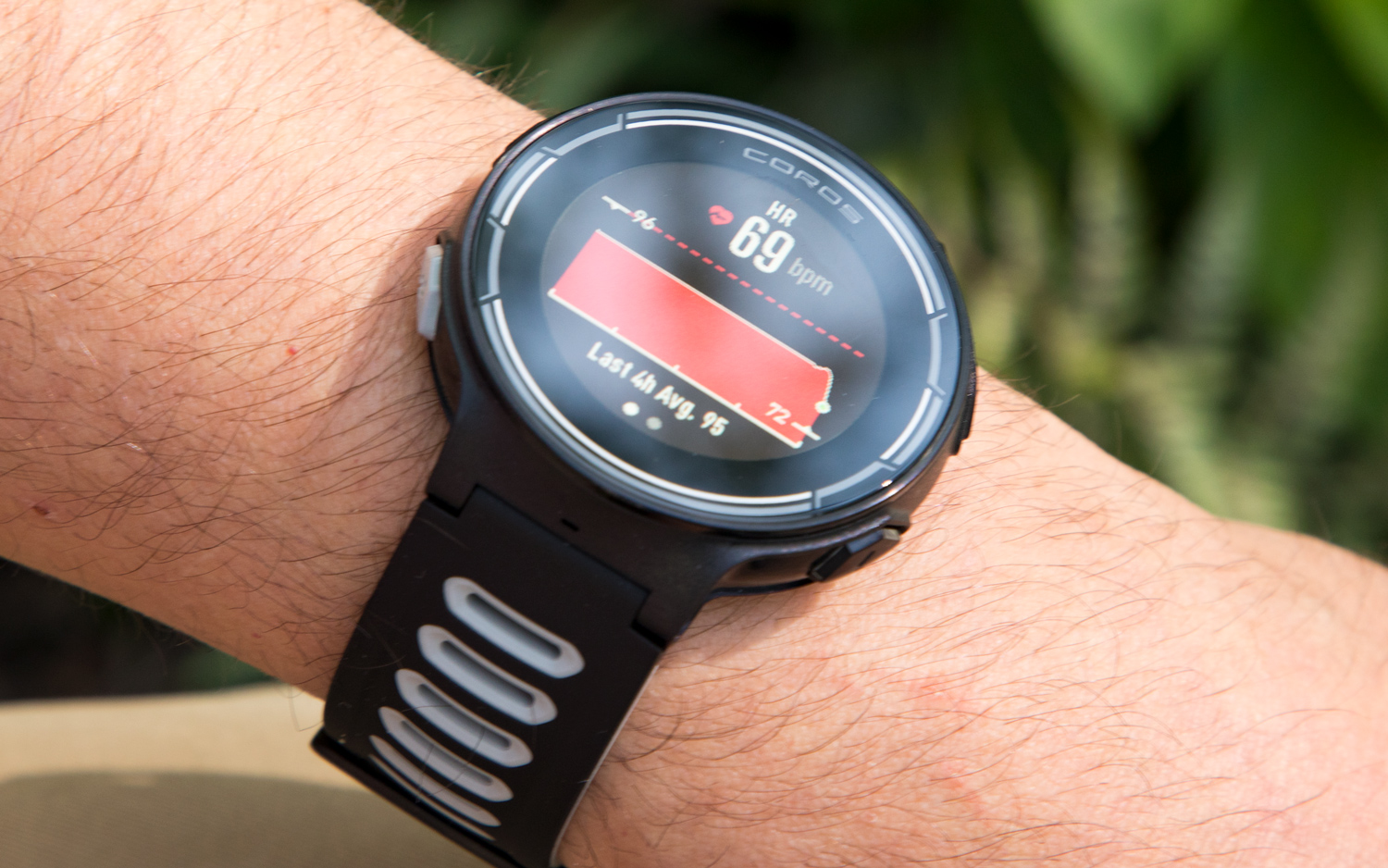
Heart Rate: On a 4-mile run, the Coros Pace measured a maximum heart rate of 151 beats per minute and an average of 139, compared to a maximum of 171 and an average of 139 from my Garmin Forerunner 35. On a 5.5-mile run, the Coros Pace measured a maximum of 155 beats per minute and an average of 141, while the Forerunner calculated a maximum of 176 and an average of 143. Overall, the Coros Pace seemed to be on track with average heart rate but a bit low for maximum heart rate.
Battery Life
Out of the box, the lithium-ion battery in the Coros Pace that I tested was already at 88 percent, and the watch came to a full charge in about half an hour. The charger clips into the side of the watch, which will lay flat while charging.
Battery life was impressive — a 35-minute run reduced the battery life by only 2 percent.
According to the company, the Coros Pace battery should last 30 days in standard use and 25 hours in GPS mode. Battery life was impressive; a 35-minute run reduced the battery life by only 2 percent, and my 9-hour hike in Maine cut into the battery by only about 40 percent. This is impressive battery life for workouts that will last several hours, and it will give you some peace of mind if you don't always remember to charge the watch before a workout.
Bottom Line
The $299 Coros Pace is a good watch if you want to track triathlon workouts but don't care about features such as listening to music, responding to notifications or tracking cross-training workouts. For around the same price, a watch like the Polar M600 ($299) will give you those additional features. For a bit more money, you can get the Garmin 735XT ($319) or the Garmin Forerunner 645 ($445), which will calculate metrics such as VO2 Max.
The Pace is a good first offering from Coros, but the watch and the app will need to add features in order to compete with similar watches from Garmin and Polar.
Credit: Tom's Guide
Brian Eastwood is a freelance writer for Tom’s Guide, focusing primarily on running watches and other wearable tech. Brian has been a professional writer and editor since 2003. He has covered healthcare tech, enterprise tech, higher education, and corporate leadership for a range of trade publications. Brian is a lifelong Massachusetts native and currently lives outside of Boston. Outside of work, he enjoys running, hiking, cross-country skiing, and curling up with a good history book.
-
gytis Hi Tom's guide,Reply
I have coros Pace myself and just dont understand your sime of the coments because coros pace is counting VO2max and HRH and also have multisport future as well as triathlon. Personaly I found this watch amasing for that price not only batery life is incredible but he also have very comfortable wrist band. I can tell alot ++++ but dont want to write so much. I think for the price 299$ its a best what you can get in a market. P.s dont forget ro regulary update software because coros increasing it alot so Pace is becoming more and more powerfull tool. I hope you will read my coment and update your review
